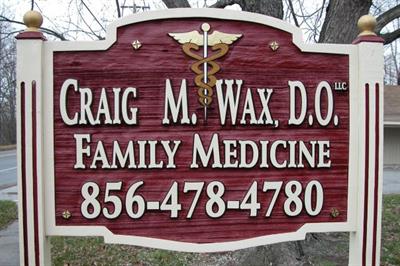Health Library ~ Family Medicine in Mullica Hill, NJAll Material copyright Craig M. Wax, DO unless otherwise denoted. SCLEROTHERAPY Definition: Sclerotherapy is a method of treatment which stimulates the body to locally form fibrous connective tissue. Sclerotherapy is performed by the injection of a variety of medications into the tissues adjacent to the ligaments to be strengthened. Indications: Sclerotherapy is used to strengthen ligaments and stabilize unstable joints or spinal segments. Basic Principles: An irritant solution is injected stimulating the body to form fibrous connective tissue. This tissue shortens, thus "tightening up" a loose ligament. History: Sclerotherapy was first used by Hippocrates to treat the shoulders of injured soldiers. It was introduced to the United States by Dr. Zophar Jayne to treat hernias. By 1937 Sclerotherapy was being used by Earl H. Gedney, D.O. and David Shuman, D.O. at Philadelphia College of Osteopathic Medicine to treat a variety of disorders associated with backache. What is Used: Sclerosing solutions vary in composition. The ingredient used most commonly in this office is 50% Dextrose. Sometimes this is not strong enough to achieve the desired result and Sodium Morrhuate is used instead. These are commonly combined with Lidocaine, a local anesthetic, to reduce the immediate pain of the injection. Other sclerosants which have been used include Sodium Tetradecyl Sulfate, Phenol, and Sarapin. These are not steroids (cortisone and its derivatives). Treatment: Sclerotherapy is commonly combined with manipulation. The manipulation serves to assure that the most unstable areas are treated first and that all joints are moving as freely as possible prior to the injections being performed. Improvement is frequently noted after the first injection. Complete response usually takes five to ten treatments done at weekly intervals. More resistant cases may require longer periods of treatment. If another underlying problem is responsible for the development of the instability, repeat treatment at intervals may be necessary. Side Effects: After an injection there is normally some discomfort which may last up to 48 hours. It is necessary for the injection to create local irritation for the fibrous connective tissue to form. The local discomfort is usually controllable with application of ice or use of an over the counter pain medication. Muscle relaxants are of no help in this setting. Limitations: Sclerotherapy is used to stabilize unstable structures. If your pain is not due to instability, sclerotherapy is of no help and is not indicated. It is also not a substitute for other appropriate therapies such as prescribed exercises or medications. There are times when no one can be 100% certain if sclerotherapy can help. In this setting a trial of treatment with a sclerosant agent is carried out while carefully evaluating the results. If a trial of sclerosant injection is unsuccessful, then the patient's problem is reevaluated with this information in mind. Summary: This paper is designed to provide general information regarding the use of sclerotherapy. If you have questions applicable to your individual case, please direct them to your physician. |
|





